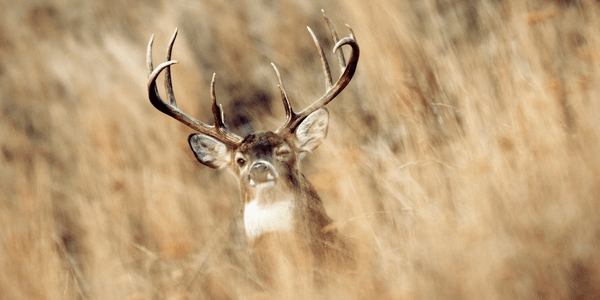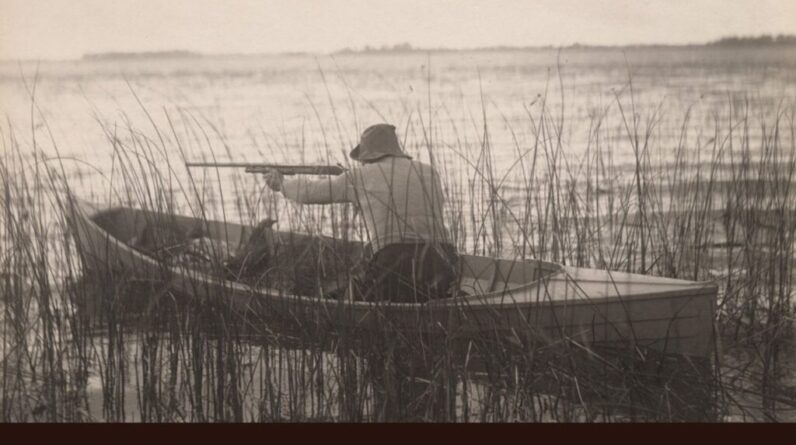
Have you ever wondered how much wind is too much for deer hunting? It’s a common question among hunters, especially those who hunt in windy areas or during unpredictable weather conditions. The truth is, the amount of wind that is ideal for deer hunting can vary depending on a few factors. In this article, we will discuss how wind affects deer behavior and hunting success, and provide some tips on how to determine when the wind is too strong for a successful hunt. So if you’re curious about how much wind is too much for deer hunting, keep reading to find out more!
When it comes to deer hunting, wind can play a significant role in determining your hunting success. Deer have an incredibly keen sense of smell, and they rely on it heavily to detect potential threats. Wind can carry your scent over long distances, making it easier for deer to detect your presence. However, a gentle breeze can also help to mask your scent and provide cover for your approach. So, how much wind is too much for deer hunting?
There isn’t a one-size-fits-all answer to this question, as it depends on various factors such as the terrain, the deer’s behavior in your area, and your hunting setup. In general, a light to moderate wind of 5-15 miles per hour can be beneficial for hunting, as it helps to carry your scent away from the deer’s location. However, if the wind exceeds 20 miles per hour, it can make it challenging to keep your scent under control and maintain accuracy with your shots.
It’s also essential to consider the direction of the wind. Ideally, you want the wind blowing in your face, so that your scent is carried away from the deer and towards your hunting area. This can help to mask your presence and increase your chances of a successful hunt. However, if the wind is blowing directly towards the deer, it’s best to reconsider your hunting plans, as the chances of getting detected are significantly higher.
So, as you can see, wind can be both a friend and a foe for deer hunters. It’s essential to pay close attention to the wind speed and direction when planning your hunts, as it can greatly impact your chances of success. In our next article, we will dive deeper into strategies for hunting in windy conditions and share some tips for managing your scent in different wind scenarios. Stay tuned for more valuable information on mastering the art of deer hunting in various weather conditions!
CLICK HERE FOR THE BESTSELLING HUNTING GEAR
How Much Wind Is Too Much For Deer Hunting
Deer hunting is an ancient and thrilling sport that requires meticulous planning and strategizing. One fundamental aspect that hunters must consider is the weather conditions, with wind being a crucial factor. Understanding the impact of wind on deer behavior and movement can greatly enhance your chances of a successful hunt. In this article, we will explore the factors to consider, ideal wind conditions, negative effects of excessive wind, signs to look out for, tactics for hunting in windy conditions, equipment considerations, and the importance of a wind strategy plan.
Weather Conditions
Weather conditions play a significant role in deer hunting, and wind, in particular, can greatly affect your hunting experience. Wind speed and direction are two key aspects that should be given utmost attention.
Wind Speed
When it comes to wind speed, there is a sweet spot that hunters should strive for. Generally, winds between 5 and 20 miles per hour are considered optimal for deer hunting. Winds below 5 miles per hour may not provide enough cover for the sound of your movements, while winds exceeding 20 miles per hour can be too excessive, disrupting deer behavior and making it difficult for hunters to maintain stealth.
Effect of Wind on Deer Behavior
Understanding how wind impacts deer behavior is crucial for a successful hunt. Deer possess an exceptional sense of smell, enabling them to detect human scent from a significant distance. Wind plays a vital role in carrying your scent away from the deer’s vicinity or toward them, depending on the wind direction. It is essential to comprehend wind patterns and how they influence deer movement, as this knowledge can give you a competitive edge.
Deer’s Sense of Smell
Deer rely heavily on their sense of smell to detect danger and locate food sources. Their sense of smell is estimated to be a thousand times more powerful than that of humans. This heightened olfactory ability makes it essential for hunters to be mindful of wind direction, as any abnormal scent can alert deer and cause them to flee.
Importance of Wind Direction
The wind direction is a vital determinant of your hunting success. It is crucial to position yourself upwind or crosswind from deer to minimize the chance of them detecting your scent. Hunting against the wind may cause them to become wary and avoid the area altogether. Therefore, understanding wind direction and its significance in relation to deer movement patterns is a skill that should be honed.
Influence on Deer Movement Patterns
Wind can significantly influence deer movement patterns, affecting the areas they frequent and their behavior. Deer tend to move with the wind, using it to their advantage to detect potential danger. They are more likely to stay downwind or in areas where the wind carries their scent away from predators. By understanding these patterns, hunters can strategically position themselves in the most advantageous locations.
Ideal Wind Conditions for a Successful Hunt
To maximize your chances of a successful hunt, it is vital to be aware of the optimal wind conditions to hunt in.
Optimal Wind Speed Range
As mentioned earlier, wind speeds between 5 and 20 miles per hour are generally considered ideal for deer hunting. Winds within this range provide enough cover for your movements, allowing you to move silently while reducing the chances of deer detecting your scent.
Best Wind Direction
The best wind direction for deer hunting largely depends on your hunting location. In general, hunting with a crosswind or quartering wind is preferred, as it reduces the chances of deer detecting your scent. However, avoid hunting directly upwind as this can spook deer and make them more cautious.
Wind-Blind Hunting Locations
Wind-blinds, also known as hunting blinds, are strategically positioned barriers that help to minimize the effect of wind on your hunting experience. These blinds provide you with a sheltered location, shielding you from the direct effects of wind and allowing you to remain undetected by deer. Finding wind-blinds is a skill that seasoned hunters acquire through experience and knowledge of the terrain.
Negative Effects of Excessive Wind in Deer Hunting
While wind is crucial for a successful hunt, excessive wind can have detrimental effects on your deer hunting experience.
Disrupting Deer Senses
Strong winds can disrupt deer senses, particularly their sense of hearing. The noise generated by strong winds can mask the sound of approaching predators or hunters, making it difficult for deer to detect potential dangers. This can disturb their normal behavior, making it more challenging for hunters to anticipate their movements.
Difficult Tracking and Scouting
Excessive wind can make tracking and scouting more challenging. When the wind is too strong, it becomes harder to pick up visual cues or track deer signs such as footprints, rubs, or scrapes. Additionally, the wind may scatter scents, making it difficult to locate specific deer trails or bedding areas.
Reduced Shot Accuracy
Wind can significantly impact shot accuracy, especially at longer distances. Strong gusts can cause your arrow or bullet to deviate from its intended trajectory, resulting in missed shots or non-lethal hits. It is crucial to consider wind speed and direction when taking shots and adjust your aim accordingly.
Signs Indicating Wind is Too Strong
It is essential to recognize the signs indicating that the wind is too strong for deer hunting to ensure your safety and increase your chances of success.
Extreme Tree and Bush Swaying
If you notice extreme tree and bush swaying, it is a clear indication that the wind is too strong. This can make it unsafe to hunt from an elevated treestand and compromise your overall hunting experience.
Difficulty Maintaining Stealth
Strong winds make it challenging to maintain stealth and move silently through the hunting area. The rustling leaves and other noisy disturbances caused by the wind can alert deer to your presence, reducing your chances of a successful hunt.
Deer Seeking Sheltered Areas
Deer are known to seek sheltered areas during strong winds. They instinctively find locations that provide them with protection from the wind, which can make spotting and approaching them more difficult for hunters.
Determining Wind Speed in the Field
To accurately determine wind speed in the field, hunters can utilize various methods.
Using Anemometers
Anemometers are devices specifically designed to measure wind speed. They can be handheld or mounted on hunting equipment such as tripods or treestand setups. Using anemometers allows hunters to obtain real-time wind speed data, enabling them to make informed decisions based on the current conditions.
Observing Natural Indicators
Nature provides numerous signs that indicate wind speed and direction. Observing the movement of leaves, grass, or flags can give you a general idea of the wind speed. Additionally, watching the flight of birds or the behavior of animals can also provide insights into the current wind conditions.
Online Wind Speed Resources
In this digital age, online wind speed resources have become readily available and are a convenient way to obtain real-time weather information. Various websites and apps provide accurate wind speed forecasts tailored to specific hunting locations.
Tactics for Windy Hunting Days
Hunting in windy conditions requires strategic adaptation and the application of specific tactics to maximize your chances of success.
Taking Advantage of Natural Wind Breaks
Identifying natural wind breaks such as hills, ridges, or dense vegetation can provide you with a hunting advantage. These features can minimize the impact of wind on your position and create a more favorable hunting environment.
Hunting Transitional Areas
Transitional areas, such as funnels or travel corridors between food sources and bedding areas, are excellent locations to hunt on windy days. Deer often use these areas to escape the wind and seek shelter. By strategically positioning yourself in these transitional areas, you increase the likelihood of encountering deer.
Using Calls or Decoys Effectively
Windy days can limit the range and effectiveness of deer calls. However, using calls that produce higher frequency sounds or using rattling antlers can increase your chances of attracting deer despite the wind. Similarly, decoys can be utilized to divert deer’s attention from the noise caused by the wind, increasing their curiosity and drawing them closer.
Importance of a Wind Strategy Plan
Developing a comprehensive wind strategy plan is crucial for deer hunting success. A well-executed plan can help reduce the impact of wind on your hunting experience and increase your chances of a successful harvest.
Pre-hunt Wind Analysis
Prior to your hunting trip, it is essential to thoroughly analyze the wind patterns in the area you intend to hunt. Studying topographic maps, reviewing weather forecasts, and conducting on-site observations can provide valuable insights into the prevailing wind conditions. This analysis will enable you to identify potential hunting locations where wind direction and speed are favorable.
Wind-Check Routine
Performing regular wind checks while hunting is vital to ensure that the wind remains in your favor. By using wind indicators such as wind probes or milkweed seeds, you can constantly monitor the wind direction and detect any shifts that may require you to adjust your hunting strategy.
Adapting to Changing Wind Conditions
Wind conditions can change abruptly, so it is crucial to adapt your hunting strategy accordingly. Continuously monitoring the wind speed and direction allows you to react quickly and make necessary adjustments in real-time.
Equipment and Gear Considerations
Selecting the right equipment and gear can enhance your hunting success in windy conditions.
Choosing the Right Hunting Clothing
Picking appropriate hunting clothing that provides insulation, wind resistance, and noise reduction is essential. Layering your clothing can help you adapt to changing weather conditions and mitigate the impact of strong winds.
Use of Wind-Detection Products
Various wind-detection products, such as wind-check powders or smoke wafers, can be invaluable tools in determining wind direction and speed. These products allow you to visualize the direction of your scent and avoid detection by deer.
Minimizing Noise in Windy Conditions
Wind can amplify the noise generated by hunting equipment and gear. Taking steps to minimize noise, such as using noise-dampening materials or modifying gear attachments, can greatly improve your stealth and prevent deer from being alerted to your presence.
Conclusion
Successful deer hunting requires careful consideration of wind conditions. By understanding the impact of wind on deer behavior and movement, hunters can strategically plan their hunts, adapt to changing conditions, and maximize their chances of success. Balancing wind factors, developing a wind strategy plan, and utilizing appropriate equipment and tactics will not only increase your chances of a successful hunt but also enhance your overall hunting experience. Remember, patience and strategic adaptation are key when determining how much wind is too much for deer hunting.






